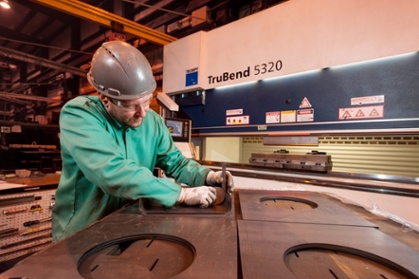
5 Key Ingredients Of A Strategic OEM Parts Manufacturer
September 22, 2017
 The right OEM parts manufacturer should add more value than simply delivering items from a purchase order. Your supplier should be easy to work with, open to taking on new challenges and adept at problem solving. You need a fabrication supplier that is committed to keeping your production lines running.
The right OEM parts manufacturer should add more value than simply delivering items from a purchase order. Your supplier should be easy to work with, open to taking on new challenges and adept at problem solving. You need a fabrication supplier that is committed to keeping your production lines running.
To determine whether your supplier is prepared to meet your needs, consider these five key ingredients of a successful OEM parts manufacturer partnership.
1. Safety
Many OEMs hold safety to be a core value, but not all custom fabricators are as willing to make an investment in safety. If your OEM parts manufacturer doesn’t visibly share your safety values, then it may be necessary to dig a little deeper into its standards – and results. What are the major components of the fabrication supplier’s safety program? Do they have their eye on achieving ISO 45001 in the future? How many days have passed since their last recordable incident, and what is their record year-over-year? An effective safety program is a sign that a leading fabricator is laser-focused on delivering high-quality OEM parts on time.
To learn more about the top areas that should be addressed by an OEM fabricator, read this piece published by The Fabricator.
2. Quality
As much as it may seem today, quality isn’t just a buzzword. Low quality has a very real impact on your operations. Low-quality parts delay your production line. Workers must spend time trying to fit them into assemblies. Unworkable parts have to be sent back for replacement. At worst, low-quality parts may impact product safety, lead to increased warranty claims and tarnish your reputation.
Make sure your OEM fabricator has strict internal quality control measures, has a through inspection process that can include non-destructive and destructive testing, and has achieved the latest industry quality standards. In a nutshell, your supplier should be aiming for zero defects with clear metrics to support this effort.
3. Scheduling
If your demand suddenly balloons, how much can you rely on your strategic OEM parts manufacturer to make the necessary adjustments to meet that demand on schedule? How can you ensure that performance and quality don’t derail over time?
Forward-thinking OEM fabricators have capabilities to routinely match their shop floor configurations, equipment redundancies and workforce to meet your forecasting demands, so increased or decreased volumes can be accommodated with minimal impact to your production line. Whether that means working ahead to meet high seasonal demand or leveraging a slowdown to build up inventory, a strategic fabrication supplier provides exceptional capacity management services as part of its overall value proposition.
4. Communication
As your manufacturing partner, your OEM fabricator should be proactive in the type of communication technology that can be made available to you and your teams. You should have the ability to maximize your usage of electronic data interchange (EDI) to cover not only jobs and job requirements but also sales orders, purchase orders, invoices, shipping notices and other documentation.
Going a step further, you should be able to work with your strategic metals manufacturing partner to identify other areas, such as real-time dashboard development, in which the communication of metrics can be enhanced and automated.
5. Cost
The effect of combining a strong commitment to safety, high-quality products and services, on-time scheduling, and heightened communication through the application of modern technologies can potentially significantly impact one major area: cost. Whether costs are driven down as a result of reduced safety issue distractions or due to efficiency gained from less manual data entry or phone calls, you should benefit.
Cost savings also tend to be realized from other partner services, such as value analysis/value engineering (VA/VE). Economic material usage, design collaboration and shipping analysis can further assist in helping you meet your target goals.
Free Up Time To Focus On Your Own Business
When your OEM fabricator acts as a true strategic partner, you have more time to focus on your core competencies. You’re able to make good on your customer promise confidently while expanding your ability to explore new ways to deliver value.
An ideal metals manufacturing partner isn’t just a short-term supplier of OEM components; your partner should serve as an extension of your capabilities both now and in the future.